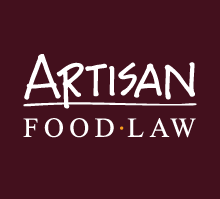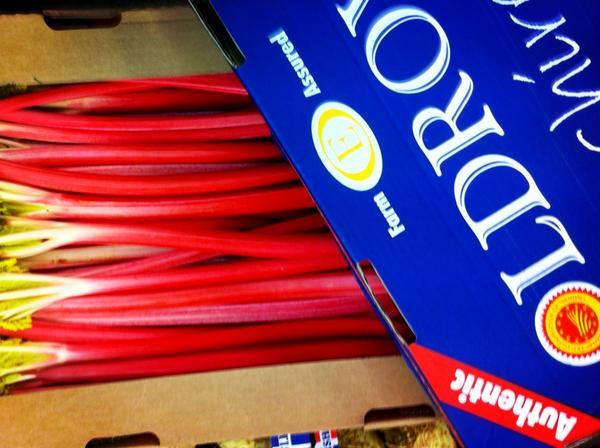Yorkshire Forced Rhubarb - an amazing local product with a fascinating history
The Yorkshire rhubarb season is now in full swing but it was in the late 19th century when forced rhubarb first took off with zeal in what became known as The Rhubarb Triangle – draw a line from Bradford to Wakefield to Leeds and back and you have the location of an important part of my local food history. The near perfect conditions required to grow forced rhubarb were fortuitously all present: a medium loam to heavy clay soil located in a micro-climate susceptible to winter frosts and a plentiful supply of shoddy, waste shards from the local wool industry, as a nitrogen rich fertiliser. The addition of cheap coal from local mines to heat the forcing sheds was the finishing touch in providing an early season crop, when fresh fruit was scarce, from a plant native to the banks of Siberian rivers.
Yorkshire Forced Rhubarb was sent to London, by a special express train run by the Great Northern Railway, for sale at Spitalfields and Covent Garden in time for Christmas and onward to Paris. Every weekday night from Christmas until Easter the express carried up to 200 tons of rhubarb. In 1939, the heyday of Yorkshire rhubarb production when 200 growers provided 90% of the world’s forced rhubarb, forcing sheds were to be found over 30 square miles throughout The Rhubarb Triangle. Nowadays only a dozen or so growers remain covering a much reduced area of 9 square miles.
The rhubarb crowns are grown unharvested outside for two years and, having fallen dormant in the autumn, they are lifted, washed clean of soil and packed close together on the surface of the soil in special forcing sheds where they sit in total darkness at a temperature of 13˚C. If you stand still and quiet in the forcing shed and you can literally hear the rhubarb growing, a creak here and there, and every so often a muffled pop as leaves unfurl.
The shoots produced are tender and pale, they are pulled by hand and by candlelight to avoid light that would otherwise spoil the crop. The exhausted rootstock is discarded at the end of the harvest which takes place between late December and March. It is a long, three years from start to harvest, and capital intensive process.

The best quality rhubarb is 40cm to 50cm long and no more than 2cm thick. The skin of the stalk ranges from salmon pink to blood red, but almost white inside. The flavour is sharp yet delicate and considered much finer than the Dutch version. The leaves should be small, bright and pale green but never eaten because while rhubarb is rich in calcium, fibre, magnesium, iron and vitamins C, B2 and B3, rhubarb leaves contain high levels of oxalic acid which is a poison.
The National Rhubarb Collection is, appropriately, held a few miles to the north at the Royal Horticultural Society’s garden at Harlow Carr near Harrogate where you will find over 130 varieties of rhubarb.
You can take a tour of the forcing sheds. Janet Oldroyd, the driving force behind E Oldroyd & Sons, a five generation family business based in Carlton in The Rhubarb Triangle, will provide you with a passionate presentation on the history of rhubarb. She can, as they say, talk the hind legs off a donkey when it comes to rhubarb, what she doesn’t know isn’t worth knowing.

In March 2010, following a campaign spearheaded by Janet Oldroyd, Yorkshire Forced Rhubarb became the 41st British product to secure Protected Designation of Origin (PDO) status within the European Union taking its place alongside Stilton cheese and champagne, in so doing confirming its past status as ‘champagne rhubarb’! Yorkshire Forced Rhubarb is also listed in the Slow Food UK Ark of Taste, a catalogue of exceptional gastronomic products in danger of disappearing due to modern systems of food production and distribution.
The Wakefield Festival of Food, Drink and Rhubarb is one of the earliest annual events in the food calendar which celebrates the traditional links with rhubarb growing in Wakefield alongside other regional produce. This year it takes place on 24 – 26 February.
Recipes for Yorkshire Rhubarb are plentiful, but you could make a start with Rhubarb and Blood Orange Meringue Pie from Eat Like a Girl. You will also find a surfeit of recipes at www.rhubarbrecipes.co.uk.
Details about tours of the rhubarb forcing sheds can be found at www.yorkshirerhubarb.co.uk or simply to listen to the rhubarb growing click here.





